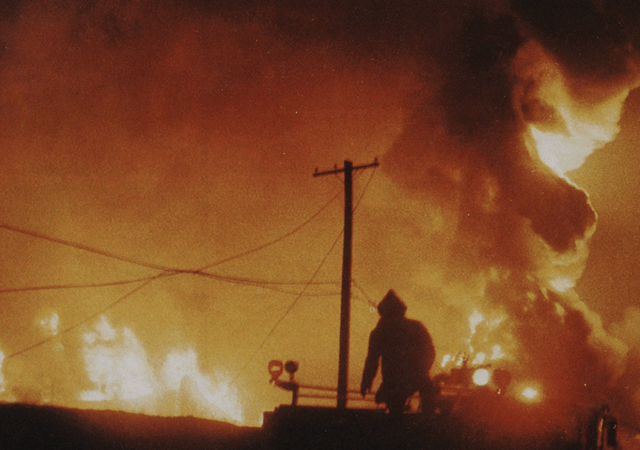Remembering An Accident: 1983 Newark Explosion

On January 8, 1983 around 12:15 am, the Texaco Farms fuel storage facility experienced a large explosion. The explosion caused one death and injured 24 others. The blast was felt up to a 130 miles away! Almost all of northern New Jersey felt the explosion and several New York boroughs such as Manhattan, Queens, and Brooklyn felt the aftershock of the explosion as well.
So what happened?..
The Newark Fire Department came to the conclusion that there wasn’t any foul play, but there was an accidental “spillage” of fuel that caused the midnight explosion. Upon further investigation by the company, they found that a facility worker had failed to monitor the pipeline. This action violated the Texaco operations manual that called for checks of the gauge. Because of the accidental overflow a vapor cloud formed. Once it ignited the flames shoot approximately 1,000 feet into the air. Due to the size of the fire it would continue to burn for three days until it was at a more manageable and less life-threatening level.
Who is to blame?
Texaco claimed many employees failed to follow shut-off protocol for when the valve began to overflow. Also, The Newark Fire Company’s investigation stated that no one person could have been responsible for the fire. A month later, five employees were fired due to these results. Two of the men fired, Robert J. Suter and Udell Evans, have worked for the company for 23 years. Robert J. Suter, the shift supervisor at the time, left around 7 pm before the explosion occurred. Suter believed he was being used as an scapegoat for the incident. The fire director stated, “They were aware of the overflow, and they didn’t take precautions to shut it down.”
Here, at TapRooT®, a global leader in improved investigation effectiveness and productivity, we underscore the importance of stopping finger pointing and blame culture, rather focusing on improving equipment reliability, fixing operating problems, identifying precursors, and improving human performance. TapRooT®’s root cause analysis takes an investigator beyond his or her knowledge to think outside the box.
We’ve all read the headlines about catastrophic events. Don’t let an accident of this magnitude devastate your city. Learn TapRooT® a world-class systematic root cause analysis process that teaches you techniques on how to investigate near-misses, identifying precursors, and much more! Avoid a major disaster like this by taking one of our 2-Day or 5-Day public courses. Click here to see what course is available near you.
To learn more about the explosion click here.



